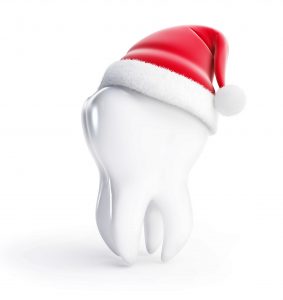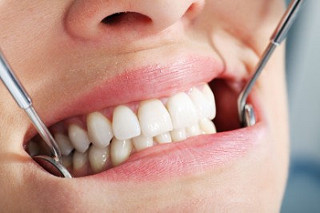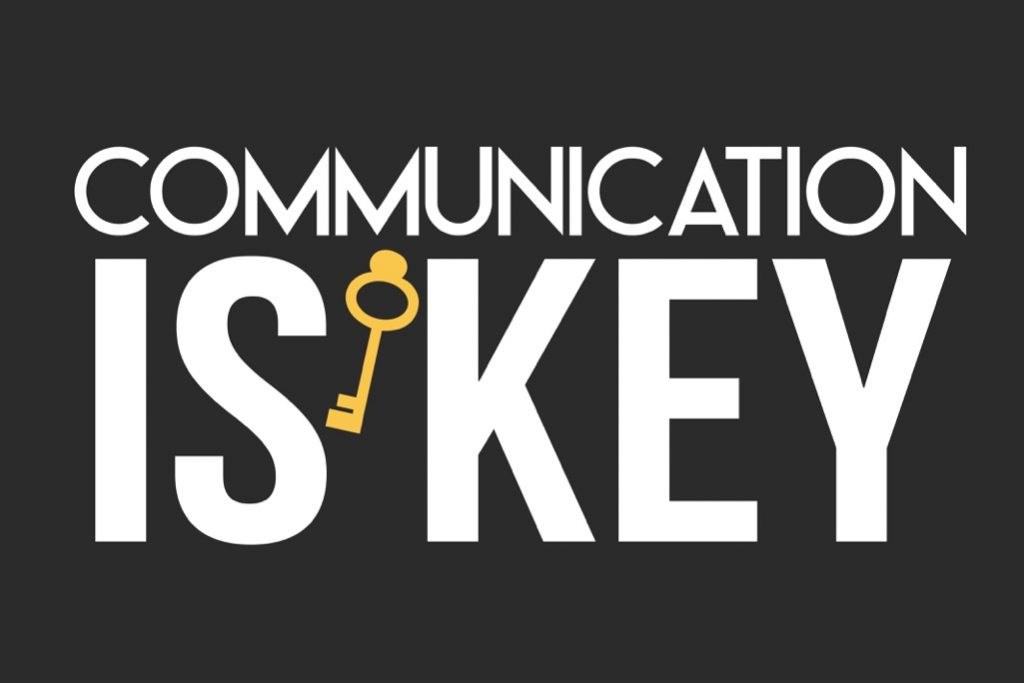J. Peter St. Clair, DMD Blog
PROVIDER RELATIONSHIPS – PART 2
December 19, 2019
Last week I discussed the importance of communication in any relationship, specifically the healthcare provider/patient relationship. Trust is mutually built as this relationship develops over time.
“There’s not enough time in the day.” Have you ever used this excuse? I said this yesterday to someone. We all tend to waste a lot of time, or at least don’t use the time we have as effectively as we could. You would think that in our technology-filled world, time management would be easier. Some of this technology actually gets in the way by adding even more of a time commitment to things that reduce interpersonal communication.
Here’s an example. It’s time to buy a new car. There are many different car brands and within those brands are many models. No matter what dealership you go to, they will gather a minute amount of information about you, or maybe none at all, but guaranteed, they have a car on their showroom floor that they tell you is the right car for you. They will spend a countless amount of time talking about the many new features that their brand has, and the options between different models. If the salesman worked for a different brand, or if you went to a different dealership, you would hear the same reasons why that brand is right for you. Their goal is to sell you a car.
If you went into a dental office and the dentist spent all their time talking about their array of technological gadgets and how they were right for you, how would you feel? If you went to a different office and that dentist had a different set of gadgets, they have a bias as to why theirs are right for you. You would feel like you were trying to be “sold” something.
Branding draws us in. You may have a preconceived notion that a particular make of car is what you “need”, or see a dental advertisement that attracts your attention.
It doesn’t take much to realize that there are many different brands of anything that would satisfy our needs.
Whether it is a car or teeth, there are often gaps between the “seller” and the “buyer”. There is a gap between what we really need and what we think we need. There is another gap between what the dentist or salesman thinks we need and what we think we need. And, more specifically, there is often a serious gap between the value some dentists have, and the value they feel they can discuss with patients. Sometimes we feel we don’t have the time to discuss these things, and other times we are afraid we will scare you away.
Dentistry offers people so much that they want and need. Why don’t people get it? What would permit someone to have this resource available, and fail to use it? What would cause them to misunderstand it so thoroughly that they fear it more than they fear the consequences of not collaborating with a dentist?
Dentists need to communicate facts and truths. They need to convey expertise and enthusiasm. This goes back to the idea of time I have mentioned so often in the past. Dentists need to spend time with patients, not hard-sell with little information, and let the patient decide what the best line of treatment is for them.
Dr. St. Clair maintains a private dental practice in Rowley and Newburyport dedicated to health-centered family dentistry. If there are certain topics you would like to see written about or questions you have please email them to him at jpstclair@stclairdmd.com. You can view all previously written columns at www.jpeterstclairdentistry.com/blog.
PROVIDER RELATIONSHIPS – PART 1
December 16, 2019
Patients see things differently than dentists. Often, what is important to dentists is not important to patients and vice versa. This seems like the hysterical discovery of the obvious, but dentists often have a blind spot when it comes to seeing things from a patient’s viewpoint.
We often have a similar blind spot in our ability to communicate with patients. When asked to rate their ability to communicate with patients, 60% of physicians rated themselves in the top 10%.
Dentists would probably have similar results.
Communication is key to any relationship. Why then do healthcare professionals, dentists specifically, often have poor communication skills with their patients? There is no one answer to this question, but we (dentists) all struggle with communicating with patients at some level.
Dentists often get a bad rap – in the media, interpersonally, and even in the movies. We (dentists) are often starting with a disadvantage in the relationship with our patients. Some patients, who may really need and want care, have preconceived notions such as fear without basis, an unpleasant past experience, or the idea that they just can’t afford it. It is more difficult to build a trusting relationship in these situations. Of course there are many patients who love their dental office, but there are still even many of those patients who dentists have trouble communicating with.
I think the biggest problem we (dentists) have in many of these communication issues is time. Dentistry is a business, and an expensive business to run efficiently. When time is money, dental income to support the business comes from work being done in the chair. This creates yet another blind spot for the dentist.
Dentists may be great tooth fixers but in general are poor communicators. Anyone can drill on a tooth but not everyone has meaningful communication skills. When was the last time a dentist sat down with you for an extended conversation to discuss your personal situation, the importance and relevance to getting good dental care and its significance to systemic health? When was the last time a dentist helped you work through your particular barrier (fear, money, time, lack of concern, trust) to getting a healthier mouth? I know I have room for improvement.
Meaningful communication skills come more easily to some than others. For most of us, it seems it is always work in progress. I’m sure you can think of numerous past experiences of poor communication and realize later how the situation could have been better handled. I can think of many. Our way of communicating is often engrained in us. If we wish to improve our communication skills we (dentists and everyone) must first become aware or more mindful of these interactions. Only then can we work on improving this skill. That takes time, and time is again a factor.
Dentists need to recognize, fully understand and be able to manage the different barriers that prevent patients from getting the care they deserve. Every patient has their own issues, their own concerns, their own personality and their own true or false notions about dentists and dentistry.
Relationships take time to develop. Talk with your dentist about anything that is holding you back from improving your dental health. These conversations build trust. Trust is the key factor in the dentist-patient relationship.
….to be continued
Dr. St. Clair maintains a private dental practice in Rowley and Newburyport dedicated to health-centered family dentistry. If there are certain topics you would like to see written about or questions you have please email them to him at jpstclair@stclairdmd.com. You can view all previously written columns at www.jpeterstclairdentistry.com/blog.
The 5 Best Smile-Safe Traveling Tips for the Holidays
December 14, 2019

AAA reports that a record-breaking 112.5 million Americans will be traveling by plane, train, and car this holiday season. Are you one of them? Unfortunately, somewhere between packing bags and wrapping presents dental health can get left out in the cold. With an abundance of sugary treats, holiday parties, and crazy schedules, this season can be a difficult time of year for your teeth. If you’re travelling for the holidays, avoid a trip to your emergency dentist and protect that holly, jolly smile with these 5 tips!
(more…)YOU CAN DO IT
December 9, 2019

Last year I wrote a column about a study I saw in an article from over a decade ago. It was about the poor odds people have about making changes in their life actually happen. The article was an outpouring of concern from healthcare experts and doctors, all looking for a way to change the behavior of people who love their lifestyle so much that they were willing to literally die from it.
In the Johns Hopkins study, 9 of 10 heart surgery patients chose to return to their unhealthy lifestyle, rather than make the changes needed to live longer. Very few were convinced by their doctors to make radical daily changes.
Based on my own experiences trying to move individuals to change habits that are having negative effects on their oral health, I knew it was difficult, but was shocked by the 90% statistic, especially relating to a do or die scenario. Two studies from 2013 relating specifically to dentistry confirm that changing behavior is not easy.
The first study looked at whether dental hygienists were as effective as they thought they were with oral hygiene instructions. The role of the dental hygienist is to instill the need, desire and ability for patients to achieve optimum oral health. The purpose of this study was to determine if patients correctly understood oral hygiene instructions provided by the hygienist and to see if the hygienists felt they were giving patients individualized instructions.
No big surprise, the findings showed a disconnect between what the hygienists believed they were conveying to their patients and what the patients actually hear. So, part of the problem with getting people to change starts with actually confirming that the person understands the call to action and the implications.
The second study was to determine if a simple follow-up contact with the patient would impact behavioral change. In this study, patients had a routine dental hygiene appointment and were given specific oral hygiene recommendations based on their individual needs. Contact was then made with patients one week after their appointment.
The patients were asked if they tried the specifically recommended products they had been instructed to use, if they liked using them, and why or why not. Only 50 percent of the patients replied to the call-out from their hygienist. Of those who did respond, most said they tried the specifically recommended product, but only 33 percent of them felt they would continue to use it. The conclusion of the study was that follow-up contact alone is not an effective method to change behavior and does not increase compliance with oral health recommendations.
So, what does it take to get people to change their habits? I think it is safe to say that some will and some won’t, no matter the consequences.
Dr. St. Clair maintains a private dental practice in Rowley and Newburyport dedicated to health-centered family dentistry. If there are certain topics you would like to see written about or questions you have please email them to him at jpstclair@stclairdmd.com. You can view all previously written columns at www.jpeterstclairdentistry.com/blog.
WHO’S RESPONSIBLE?
December 2, 2019
We all have people we look up to, whether it is in our personal or professional life. One of those people in my professional life is the late Dr. LD Pankey. Dr. Pankey was a true visionary. There is an advanced dental education institute named after him in Florida, where dentists learn from his influential teachings.
I recently read an article he wrote in 1981, 8 years before his death. It is interesting to read some of the things he wrote, because it shows how much things have not changed and how well he understood people and his profession. I would like to share a few paragraphs from this piece:
“Another important element, then, in the future of dentistry is determining the answer to the question: why don’t more people with needs go to the dentist? In-depth studies on consumer attitudes have turned up a host of reasons, but one surpasses all the rest. Most people who fail to seek dental care fail because they don’t perceive their need. More astounding than that is the fact that the majority of people who do go to the dentist don’t perceive the need either!
If the public is ever to be enlightened about the importance of dental health, who will have to do the enlightening? I’ve never found anyone else I could depend on to do it. I had to build the one-to-one relationships with my patients that were needed to make my practice- and thus the future of dentistry- prosper and grow.
People with dental needs are out there, all right, but even when they do perceive their need, they must be assured there’s someone available who will identify with what they’re feeling and devote themselves to helping them to be healthy, happy and whole.”
Dr. Pankey asks who will enlighten the public about how good dental health is better for your overall health? His answer is the same today as it was when this piece was written. The dentist (and dental team), who is dedicated to taking the time to listen and build a relationship with the patient, is the only one who has the best interest of the patient.
The insurance industry is trying to turn dentistry into a commodity, where a “cleaning”, a filling a crown or a denture is the same anywhere. It’s just “stuff” that’s done to fix problems. The insurance company’s main interest is profitability – period. Does it make sense that an insurance company should be able dictate who you can see as a provider?
The business of dentistry has reacted to these things as well. One example are the commercials on TV for a corporate dental facility that only does dental implants. The ads target the large sector of the population who thinks removal of teeth and replacement with dental implants fixes them for life. This is far from the truth. While there are patients who truly benefit from these types of procedures, many others have healthy teeth removed because it seems like the easier thing to do.
You have to be the one to decide how important your health is. In 1981 there were no connections between oral health and systemic health. Today we know that a healthy mouth is so important to a healthy body. If your health is a priority, you should seek regular dental care with a professional team who has your best interest at heart.
Dr. St. Clair maintains a private dental practice in Rowley and Newburyport dedicated to health-centered family dentistry. If there are certain topics you would like to see written about or questions you have please email them to him at jpstclair@stclairdmd.com. You can view all previously written columns at www.jpeterstclairdentistry.com/blog.
ASK THE DENTIST
November 25, 2019

Recent questions from readers answered.
Liz H: I was recently told by a dentist that I need a root canal, a post, periodontal crown lengthening surgery and a crown. The total cost of treatment is $3500! Do I have any alternatives?
That is a difficult question to answer without seeing the specific case but here are some thoughts. There are quite a few things to consider. The first is the general condition of the teeth. If you have numerous other dental problems that need to be addressed, you must prioritize these and decide if the cost of doing them all is something you can afford, or if treatment needs to be spread out over time. The last thing you want to do is spend $3500 on one tooth and then be out of funds to address the other problems.
Let’s assume that this is the only tooth that needs to be addressed. I would look at your past history of dental problems. If you have had limited problems with a low rate of dental decay in general, this treatment may be the best option. If you have had a problem with dental decay, the best alternative might be to extract the tooth and do a dental implant. The cost of the treatment would be about the same and there would be no chance of recurrent problems with decay.
Extracting the tooth and not replacing it can lead to teeth shifting, bite problems and a decrease in function. If the cost of treatment is beyond your means, ask the dentist if there are options to stretch the payment out over a period of time.
Tom Q: My son has been in braces for over a year and has multiple teeth with decay. What should we do?
My first question would be – Why does he have so much decay? Although there are many factors, diet and home care are most likely the culprits for the problem. If the decay can be easily fixed, the diet can be controlled (i.e. decrease sugar intake), and his home care can improve (including a prescription fluoride toothpaste), that would be the best way to go and the braces treatment can move on. If the decay is extensive and his compliance is poor, the best thing to do may be to remove the braces and wait until improved conditions are met before continuing with the braces.
Linda T: My dentist keeps telling me that I need a bunch of crowns. I don’t have any pain and the crowns seem excessive and costly. Why can’t I just wait until something happens and fix the problem when it arises?
You can wait. However, there is probably a good reason the treatment is being suggested. Often, being proactive in replacement of aging large fillings can prevent bigger problems to come. The purpose of a crown in this situation is to protect the tooth. Waiting for “something to happen” can often mean more treatment down the road such as root canals or gum surgery. If you have multiple teeth that need this treatment, ask for a treatment plan to sequence the treatment over time. This is better than waiting.
Each person’s individual situation is different based on things like finances and the value they place on dental health. Ignoring is never a good option.
Dr. St. Clair maintains a private dental practice in Rowley and Newburyport dedicated to health-centered family dentistry. If there are certain topics you would like to see written about or questions you have please email them to him at jpstclair@stclairdmd.com. You can view all previously written columns at www.jpeterstclairdentistry.com/blog.
DON’T SKIP THE DENTIST
November 18, 2019

There was an article written in the The Boston Globe a while back entitled “The Mistakes Doctors Make”…………..and right below that was a column called “Advice for all ages: Don’t skip the dentist.” They were both interesting perspectives.
The dental article starts with, “Earlier this month, a team of researchers from London and the University of Connecticut announced that aggressive treatment of gum disease can improve the function of blood vessel walls in the body, potentially reducing the risk of heart attacks.” The concept is nothing new. We have known for years of the mouth-body connection with health. However, the key to the statement above is “aggressive treatment of gum disease”.
What does aggressive treatment of gum disease mean? It means that instead of watching and waiting for resolution of gum problems on its own, whatever treatment is needed to achieve gum health should be performed.
Periodontal (gum) disease is a silent disease. This means that it does not hurt. Over 75% of the population has some form of periodontal disease. Whether you have early stages of the disease or advanced periodontal involvement, you have periodontal disease. Any form of this disease is potentially affecting your overall systemic health. The goal in any case is to become periodontally healthy, whether it involves simply seeing a dentist more frequently or surgery.
Many dentists tend to watch and wait far too often. “Aggressive treatment of gum disease” means that if the disease is identified, it needs to be addressed. Let’s get it right out in the open – Once you have periodontal disease, and even after it is treated, it will always return unless you follow a strict regimen of home care and professional care…….for your entire life.
Even the smallest amount of inflammation in your mouth is gum disease. Periodontal disease is a chronic inflammatory process. As the article states, “Chronic inflammation anywhere, makes the body release nasty chemicals called cytokines that have been linked to diabetes and heart disease.” It goes on to say, “Cytokines can also trigger inflammation in artery walls, raise blood pressure, worsen cholesterol levels, and increase blood clotting, which can lead to potentially fatal heart attacks.” This also includes strokes. “Pregnancy complications, too, have been linked to gum disease, perhaps because chronic inflammation leads to high levels of a hormone-like substance called prostaglandin E-2, which can induce labor.”
So, what are you waiting for? No one wants to hear that they need treatment for something. It is even harder to get someone to “treat something” that does not hurt and is seemingly not affecting their daily life. The fact of the matter is, periodontal disease is a disease. Diseases need to be treated or they will affect and possibly even end your life. Periodontal disease is no exception. And remember, “aggressive treatment” does not mean watch and wait to see if it goes away. It won’t go away on its own – I promise.
Dr. St. Clair maintains a private dental practice in Rowley and Newburyport dedicated to health-centered family dentistry. If there are certain topics you would like to see written about or questions you have please email them to him at jpstclair@stclairdmd.com. You can view all previously written columns at www.jpeterstclairdentistry.com/blog.
Foods You Shouldn’t and Shouldn’t Eat If You Have Obstructive Sleep Apnea
November 13, 2019

It’s November, which means the holiday season is officially here. Before you know it, your calendar will fill up with holiday parties, work events, and get-togethers with family and friends. At all of these events, there will undoubtedly be lots of sweet treats to indulge in. If you have obstructive sleep apnea, all of this food can actually help alleviate or even exacerbate your disorder. That being said, which foods should you avoid? Which ones should you let yourself enjoy? Below you’ll find a quick guide on foods that affect your sleep apnea.
(more…)EXAMS IN DENTISTRY
November 12, 2019

Diagnosis is the key to success in any area of medicine, including dentistry. Proper diagnosis leads to success in treatment. In dentistry, there are different exams used at different times of a patient’s “career” at the dentist. I would like to clarify some of these in this column.
The Comprehensive Oral Evaluation is the term used to describe the initial exam with a new dentist. For insurance purposes, it is usually paid once in the lifetime of a patient with a single dentist. If a patient does not see the dentist on a regular basis it may be paid for once every 5 years. This evaluation usually is a more detailed exam performed by the dentist. It includes charting of the patient’s teeth (including present/missing teeth and existing restorations), a periodontal exam (to determine the health of the gums and bone that support the teeth), a visual oral cancer screening (a detailed exam of the soft tissues to check for any abnormalities), a review of the patient’s health history (including familial history, medications, etc.), and a general occlusal exam (an evaluation of how the teeth, muscles and TMJ joints are working together). This exam is used as the baseline for where a patient starts in an individual dental practice.
The Periodic Oral Evaluation is the exam that is done in conjunction with visits to the hygienist. For insurance purposes, this exam is usually covered every 6 months. It is separate from the “cleaning” of the teeth. This exam generally looks at the same areas as the previous exam described, but in less detail. The results of this exam are compared to the baseline exam that has been previously completed. Although the exam must be overseen by a dentist, many of the parts of the exam may be performed by the hygienist and reviewed by the dentist.
The Limited Oral Evaluation is the term used to describe an unscheduled visit to the dentist, usually for when a patient presents with a problem. For example, if a patient presents with the chief complaint of a toothache, this exam covers the reading of any necessary dental x-rays and diagnosis of the problem. It may result in the scheduling of the patient for treatment, or referral to a specialist. Different insurance companies have various guidelines for how often they will pay for these visits.
Then there is the underutilized Occlusal Analysis. The reason it is underutilized is because insurance companies generally do not cover it. This is unfortunate, because it serves a very distinct and important role in the diagnosis of many issues that patients encounter. Temporomandibular joint (TMJ) issues, muscular problems, tooth wear/fracture and pre-prosthetic evaluation are all things that could benefit from the occlusal analysis. It is generally a combination of a clinical exam and an evaluation of models of a patient’s teeth, which are mounted on an instrument which simulates the patient’s jaw movements. There are many important things that can be learned from completing this detailed study of the bite relationship, which can lead to much greater success in treating certain patients.
Dr. St. Clair maintains a private dental practice in Rowley and Newburyport dedicated to health-centered family dentistry. If there are certain topics you would like to see written about or questions you have please email them to him at jpstclair@stclairdmd.com. You can view all previously written columns at www.jpeterstclairdentistry.com/blog.
COMMUNICATION IS KEY
November 4, 2019

It is not uncommon to get a second opinion, or a second or third quote for things like car repairs and home improvements. When it comes to our health, it usually depends on the nature of the issue. More complex issues in medicine, such as a diagnosis of cancer, an unknown diagnosis, or other major medical issues in which we have to make decisions about significant treatment, tend to stimulate people to get more than one opinion. In dentistry, it seems that the incidence of second opinions is not as great.
Routine dental care is generally not that complicated. There are many different ways to do the simplest things in dentistry. The method is a function of the dentist’s beliefs and training. It is relatively uncommon for a patient to get a second opinion for this type of maintenance dental care. Although there is some subjectivity as to what different dentists might deem as “needing” to be done, patients usually base their decision on their perceived need. This perception of need comes from the dentist’s ability to communicate the reasons for treatment.
The patient’s trust in their provider is a big factor. If a patient trusts and genuinely likes their dentist, they may not necessarily do or want to do what the dentist wants them to, but they are comfortable enough to make the decision on treatment. It is when there is a lack of trust, for one reason or another, that patients tend to venture out for another opinion. This lack of trust usually stems from a personality conflict or the inability of the dentist to properly communicate with the patient effectively.
Even when there are more complex dental issues, it is my feeling that patients base the need for another opinion on lack of trust. Another important factor is that the patient is given choices. Patients always have the right to choose what treatment they feel is right for themselves. If choices are given and the treatment is properly communicated to the patient, they have the ability to decide in what direction to proceed.
If a dentist properly communicates the need for treatment and the patient decides to do nothing, it is the patient’s choice. It is when treatment is properly presented and it aligns with the patient’s perception of need or desire, that the patient moves forward with treatment.
Fees tend to be a less common reason for patients to seek another opinion. Fees for treatment can definitely vary. The problem with seeking treatment based on fees is that the same treatment in two different offices with different fees can also vary in the level of expertise and precision in which it is done. There are many factors.
A higher fee does not always mean a higher quality product. Fees are generally based on the time involved, the materials used, and the perceived expertise of the provider. Be cautious when seeking treatment based on fees. The fee for treatment should definitely be considered, but the entire treatment presentation and the way in which it is communicated should be used to determine your decision.
Dr. St. Clair maintains a private dental practice in Rowley and Newburyport dedicated to health-centered family dentistry. If there are certain topics you would like to see written about or questions you have please email them to him at jpstclair@stclairdmd.com. You can view all previously written columns at www.jpeterstclairdentistry.com/blog.







